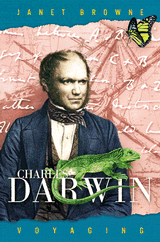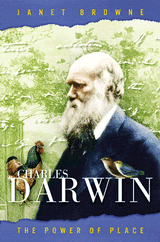A. Bowdoin Van Riper is Adjunct Professor at Southern Polytechnic State University. He is the author of
"Rockets and Missiles The Life Story of a Technology" (2007),
"Looking Up: Aviation and the Popular Imagination" (2003),
"Science in Popular Culture: A Reference Guide" (2002), and
"Men among the Mammoths: Victorian Science and the Discovery of Human Prehistory" (1993). Once a field dominated by triumphant narratives about a universal search for the Truth,
the history of science has grown steadily broader, deeper, and more sophisticated. Dozens of works could
symbolize the last half-century of that transformation. Five, in particularly, stand out: A. Hunter Dupree's Science in the Federal Government (1957) was a founding work in the now-thriving
historiography of science in America. Two of Dupree's key themes, then novel, have become virtually axiomatic
in the history of science. The first is that the means by which science is funded shapes not only how science
is done but what science is done. The second is that place matters, and that the practice of"Western science"
varies from nation to nation and from metropolis to frontier. Martin J. S. Rudwick's The Meaning of Fossils (1976)  was built around the idea that fossils
(and other scientific data) do not"speak for themselves" but have meanings attached to them by those who
study them. Rudwick analyzed five cases, from the 15th century to the 19th, in which those meanings were
disputed. His work showed that the history of a discipline could be more than just a narrative of"great
discoveries, and set the stage for similar studies of" contested objects" in other disciplines.
was built around the idea that fossils
(and other scientific data) do not"speak for themselves" but have meanings attached to them by those who
study them. Rudwick analyzed five cases, from the 15th century to the 19th, in which those meanings were
disputed. His work showed that the history of a discipline could be more than just a narrative of"great
discoveries, and set the stage for similar studies of" contested objects" in other disciplines.
In The Making of the Atomic Bomb (1987), Richard Rhodes gave
 the history of science its equivalent of Shelby Foote's
The Civil War or David McCullough's The Path Between the Seas: an epic narrative, written by an"outsider"
(Rhodes is a journalist), that combined effortless command of complex material with deft character sketches
and a crystalline writing style. It remains the definitive introduction to the definitive event in the
history of twentieth century science, and one of only two histories of science awarded a Pulitzer Prize.
the history of science its equivalent of Shelby Foote's
The Civil War or David McCullough's The Path Between the Seas: an epic narrative, written by an"outsider"
(Rhodes is a journalist), that combined effortless command of complex material with deft character sketches
and a crystalline writing style. It remains the definitive introduction to the definitive event in the
history of twentieth century science, and one of only two histories of science awarded a Pulitzer Prize.
Londa Schiebinger's The Mind Has No Sex? (1989)
 did more than just painstakingly reconstruct the lives
and contributions of long-forgotten women scientists from the 17th and 18th centuries. It revealed the complex,
unsuspected ways in which science in that period was intertwined with, and shaped by, the overlapping social
worlds of royal court, work, and family. Mind helped to explode the myth that the story of women in science
began in the late-19th century, and to open the social history of early modern science to serious scholarly
attention.
did more than just painstakingly reconstruct the lives
and contributions of long-forgotten women scientists from the 17th and 18th centuries. It revealed the complex,
unsuspected ways in which science in that period was intertwined with, and shaped by, the overlapping social
worlds of royal court, work, and family. Mind helped to explode the myth that the story of women in science
began in the late-19th century, and to open the social history of early modern science to serious scholarly
attention.
Janet Browne, one of the team of editors
 responsible for annotating and publishing Charles Darwin's notebooks and letters, used that project as
responsible for annotating and publishing Charles Darwin's notebooks and letters, used that project as
 a springboard for a two-volume biography: Charles Darwin: Voyaging
(1995) and Charles Darwin: The Power of Place (2002).
Browne's approach was uniquely suited to her subject:
Correspondence was, for Darwin, a crucial tool for gathering data and discussing new ideas. It was also a
triumphant confirmation of the idea that scientists' ideas can best be understood through their unpublished papers.
a springboard for a two-volume biography: Charles Darwin: Voyaging
(1995) and Charles Darwin: The Power of Place (2002).
Browne's approach was uniquely suited to her subject:
Correspondence was, for Darwin, a crucial tool for gathering data and discussing new ideas. It was also a
triumphant confirmation of the idea that scientists' ideas can best be understood through their unpublished papers.
|  was built around the idea that fossils
(and other scientific data) do not"speak for themselves" but have meanings attached to them by those who
study them. Rudwick analyzed five cases, from the 15th century to the 19th, in which those meanings were
disputed. His work showed that the history of a discipline could be more than just a narrative of"great
discoveries, and set the stage for similar studies of" contested objects" in other disciplines.
was built around the idea that fossils
(and other scientific data) do not"speak for themselves" but have meanings attached to them by those who
study them. Rudwick analyzed five cases, from the 15th century to the 19th, in which those meanings were
disputed. His work showed that the history of a discipline could be more than just a narrative of"great
discoveries, and set the stage for similar studies of" contested objects" in other disciplines.
 the history of science its equivalent of Shelby Foote's
The Civil War or David McCullough's The Path Between the Seas: an epic narrative, written by an"outsider"
(Rhodes is a journalist), that combined effortless command of complex material with deft character sketches
and a crystalline writing style. It remains the definitive introduction to the definitive event in the
history of twentieth century science, and one of only two histories of science awarded a Pulitzer Prize.
the history of science its equivalent of Shelby Foote's
The Civil War or David McCullough's The Path Between the Seas: an epic narrative, written by an"outsider"
(Rhodes is a journalist), that combined effortless command of complex material with deft character sketches
and a crystalline writing style. It remains the definitive introduction to the definitive event in the
history of twentieth century science, and one of only two histories of science awarded a Pulitzer Prize.
 did more than just painstakingly reconstruct the lives
and contributions of long-forgotten women scientists from the 17th and 18th centuries. It revealed the complex,
unsuspected ways in which science in that period was intertwined with, and shaped by, the overlapping social
worlds of royal court, work, and family. Mind helped to explode the myth that the story of women in science
began in the late-19th century, and to open the social history of early modern science to serious scholarly
attention.
did more than just painstakingly reconstruct the lives
and contributions of long-forgotten women scientists from the 17th and 18th centuries. It revealed the complex,
unsuspected ways in which science in that period was intertwined with, and shaped by, the overlapping social
worlds of royal court, work, and family. Mind helped to explode the myth that the story of women in science
began in the late-19th century, and to open the social history of early modern science to serious scholarly
attention.
 responsible for annotating and publishing Charles Darwin's notebooks and letters, used that project as
responsible for annotating and publishing Charles Darwin's notebooks and letters, used that project as
 a springboard for a two-volume biography: Charles Darwin: Voyaging
(1995) and Charles Darwin: The Power of Place (2002).
Browne's approach was uniquely suited to her subject:
Correspondence was, for Darwin, a crucial tool for gathering data and discussing new ideas. It was also a
triumphant confirmation of the idea that scientists' ideas can best be understood through their unpublished papers.
a springboard for a two-volume biography: Charles Darwin: Voyaging
(1995) and Charles Darwin: The Power of Place (2002).
Browne's approach was uniquely suited to her subject:
Correspondence was, for Darwin, a crucial tool for gathering data and discussing new ideas. It was also a
triumphant confirmation of the idea that scientists' ideas can best be understood through their unpublished papers.